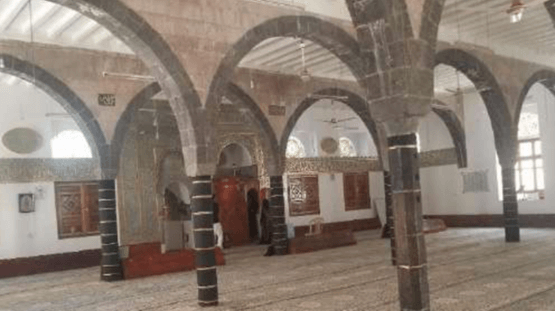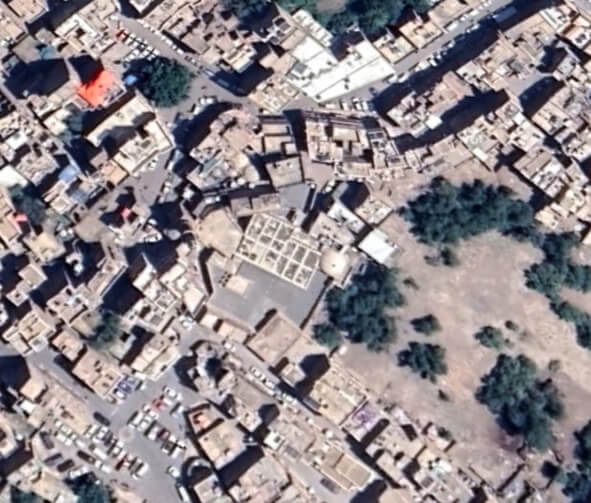
Al-Abzar Mosque – Old Ṣan‘ā’
مسجد الأبزر- صنعاء القديمة
Monument description
The construction of the Mosque dates back to the period of the first Ottoman Empire (945-1045 AH / 1538-1635 CE), when, from the beginning of the 16th century, the Ottomans penetrated into the countries of the Arab world, to repel the Portuguese invasion, protect the global trade in the Arab seas and the Islamic Holy Sites in the Hijaz. The old Mosque was demolished, and the current Mosque was built in its present location. Documents declare its preservation for fear of new constructions for residential and commercial purposes.

Architectural and cultural value
Construction style and built date: The layout of the Mosque follows the style of Mosques, consisting in a tiled Prayer Hall, a flat roof supported by wooden beams resting directly on the capitals of stone columns and arches. A small Mosque called the Al-Azhar Mosque was previously on this site, and its construction is attributed to the great Companion of the Prophet, Saad Ibn Abi Waqqas.
Components of the Mosque: Prayer Hall, Minaret, Al-Manzilah, Berkah, Ablution Unit, Sabil and traditional baths.
- Justifications for intervention:
- 1. The building has been neglected for lack of funding
- 2. Preserving the monument and preventing further damage
- 3. Restoration of damages to the Mosque resulting from the air strikes to the northern part of the Old City of Sana‘a
- 4. Contribute to the restoration of damaged monuments in a proper manner in order to keep Old Sana‘a in the World Heritage List
- Monument conditions:
- Damages result from old building practices and time factors, inadeguate repairs, previous poor restoration, and water leakage into the Mosque.
These damages include:
1. Cracking of a substance called Qadad in the water pool and wall surfaces.
2. Cracks on the roof of the Prayer Hall.
3. Problem linked to simple subsidence, moisture and salinity in the foundations.
4. The collapse of some parts of the stone walls of the settlements and the northern gate of the pond
- Treatment:
- – Restoration and re-layer Qudad in the affected areas
- – Restructuring the draining system for the rainwater on the northern façade
- – Reconstruction of the dilapidated wall
- – Repair of the longitudinal cracks
- – Treatment of the damaged foundations and resolve the moisture problem
- – Treatment of the roof to prevent rainwater intrusion.

Countries





